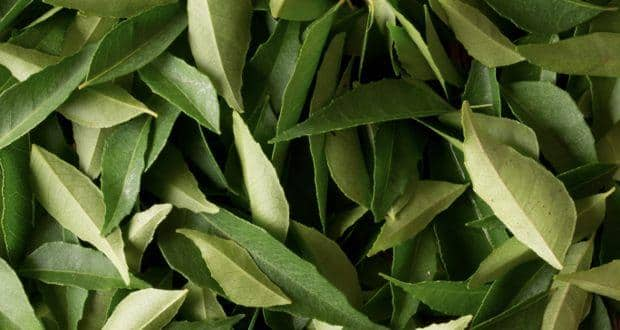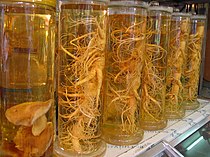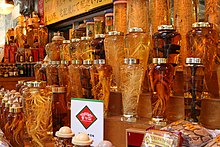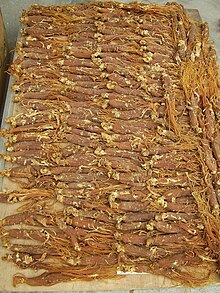Kadi patta or curry leaves is
a staple in Indian and Pakistani dishes . Commonly used as seasoning, this leaf adds a
special flavour to every dish it is added to. But there is more to the
humble curry leaf than simply flavour. Packed with carbohydrates, fiber,
calcium, phosphorous, iron, magnesium, copper, minerals and vitamins
like nicotinic acid and vitamin C, vitamin A, vitamin B, vitamin E,
antioxidants, plant sterols, amino acids, glycosides and flavonoids,
curry leaves help your heart function better, fights infections and can
enliven your hair and skin with vitality. Want to know more? Here are
the top 10 health benefits of kadi patta.
Helps keep anaemia at bay:
Kadi patta or curry leaves are a rich source of iron and folic acid. Interestingly, anaemia is not only about the lack of iron in one’s body, it is also the body’s inability to absorb iron and use it. This is where folic acid comes into paly. Folic acid is mainly responsible for carrying and helping the body absorb iron, and since kadi patta is a rich source of both the compounds it is your one-stop natural remedy to beat anaemia.
Tip: If you suffer from anaemia eat one date (khajoor) with two kadi patta leaves on and empty stomach every morning. This will not only help keep your iron levels up it will also help make you stronger and beat the symptoms of anaemia.
Protects your liver from damage
If you are a heavy drinker, eat a lot of fish or indulge in other activities that could be damaging your liver, then curry leaves are your best friend. A study published in Asian Journal of Pharmaceutical and Clinical Research found that curry leaves were highly effective in protecting the liver from oxidative stress that commonly affects it when one ingests harmful substances like mercury (commonly found in fish), alcohol and other environmental factors. The highly effective anti-oxidative properties – due to the high amount of kaempferol it contains – combined with vitamin A and C not only protects the liver but also stimulates it to work more efficiently.
Tip: This remedy is very effective to strengthen the liver. Heat one spoon of homemade ghee, add the juice of a cup of kadi patta, some sugar and freshly powdered pepper. Remember to only heat this mixture a little as Kaempferol boils at very low temperatures and will evaporate if overheated.
Keeps your blood sugar levels under check – fights diabetes
Curry leaves are potent anti-diabetic agents. They are believed to also have an adjuvant action on non-insulin dependant diabetics (people with type 2 diabetes). A study published in the Journal of Plant food for Nutrition, found that curry leaves have a great impact on the blood sugar levels of diabetics. They showed that not only does it help lower the blood sugar levels, but also kept in check for a few days after the administration of curry leaves. Curry leaves help your blood sugar levels by affecting the insulin activity of the body and reduces ones blood sugar levels. Also the type and amount of fiber contained within the leaves also played a significant role in lowering blood sugar levels. So, if you suffer from diabetes, kadi patta is the best natural method to keeping your blood sugar levels in check. Apart from that kadi patta is known to help improve digestion and alter the way your body absorbs fat, thereby helping you lose weight. Since weight gain is one of the leading causes of diabetes, kadi patta treats the problem right from the root.
Tip: To help keep your blood sugars under check you should ideally add kadi patta to all your meals. Alternatively having fresh leaves on an empty stomach everyday can also help.
Read more about causes, symptoms, diagnosis and treatment of diabetes.
Lowers cholesterol and protects you from heart disease
A study published in the Journal of Chinese Medicine found that curry leaves have properties that can help in lowering one’s blood cholesterol levels. Packed with antioxidants, curry leaves prevent the oxidation of cholesterol that forms LDL cholesterol (bad cholesterol). This in turn helps in increasing the amount of good cholesterol (HDL) and protects your body from conditions like heart disease and atherosclerosis.
Strengthens the organs of your stomach and helps with digestion
Curry leaves are known to be carmative in nature and help greatly in digestion. Once ingested it helps the stomach digest food well and flush out the rest. In Ayurveda it is believed that kadi patta has mild laxative properties that not only help the stomach get rid of unwanted waste, it also rids the body of ‘ama’ (or toxic waste) and balances out the pitta levels in the body.
Can help relieve the symptoms of diarrhoea
Even though curry leaves have mildly laxative properties, it is a great remedy for diarrhoea. This because kadi patta contains carbazole alkaloids that lend it anti bacterial and anti inflammatory properties that help heal an upset stomach. Apart from that, curry leaves are also known to balance out all the three doshas in the body and reduce the amount of pitta in the stomach – a side effect of diarrhoea according to Ayurveda.
Tip: If you suffer from diarrhoea gently crush some kaddi patta into a ball (the size of a berry), and drink it with some butter milk. Do this twice to thrice a day for relief.
Can reduce the side effects of chemotherapy
According to a study curry leaves have the amazing ability to protect the body from the ill effects of chemotherapy and radiotherapy. It not only protects the chromosomes from damage but also protects the bone marrow and halts the production of free radicals in the body. The study also suggested that this astonishing ability of the leaf could also indicate an ability to protect the body from cancers.
Reduces congestion in the chest and nose
If you suffer from a wet cough, sinusitis or chest congestion, kadi patta is a very effective home remedy to relieve the symptoms. Packed with vitamin C, A and compounds such as kaempferol that is a very potent anti inflammatory, anti bacterial, anti fungal, decongestant and antioxidative agent, curry leaves can help loosen up and release congested mucous.
Tip: To relieve congestion take a spoon of powdered curry leaves and add a spoon of honey to it. Make it a paste and eat this solution twice a day.
Can help heal and reduce skin infections, beat early ageing and rid your skin of blemishes
Sounds unbelievable doesn’t it? But it is true, kadi patta contains very strong anti-oxidant properties , anti-bacterial, anti-fungal and anti-protozoal properties. This makes a great home remedy for common skin infections like acne and fungal infections of the nail that are often difficult to treat.
Is great to stop hair fall, premature greying of the hair and accelerate hair growth
Kadi patta has always been known to help in preventing greying of the hair. But it also very effective in treating damaged hair, adding bounce to limp hair, strengthening the shaft of thin hair, hair fall and treats dandruff. The best part about this benefit is that you can either choose to eat the curry leaves to help with your hair woes or apply it to your scalp as a remedy.
Tip: To help strengthen your hair and fight dandruff, add the juice of kadi patta, to 100ml of coconut oil. Heat this oil till it turns blackish and apply it to your scalp regularly.
Helps keep anaemia at bay:
Kadi patta or curry leaves are a rich source of iron and folic acid. Interestingly, anaemia is not only about the lack of iron in one’s body, it is also the body’s inability to absorb iron and use it. This is where folic acid comes into paly. Folic acid is mainly responsible for carrying and helping the body absorb iron, and since kadi patta is a rich source of both the compounds it is your one-stop natural remedy to beat anaemia.
Tip: If you suffer from anaemia eat one date (khajoor) with two kadi patta leaves on and empty stomach every morning. This will not only help keep your iron levels up it will also help make you stronger and beat the symptoms of anaemia.
Protects your liver from damage
If you are a heavy drinker, eat a lot of fish or indulge in other activities that could be damaging your liver, then curry leaves are your best friend. A study published in Asian Journal of Pharmaceutical and Clinical Research found that curry leaves were highly effective in protecting the liver from oxidative stress that commonly affects it when one ingests harmful substances like mercury (commonly found in fish), alcohol and other environmental factors. The highly effective anti-oxidative properties – due to the high amount of kaempferol it contains – combined with vitamin A and C not only protects the liver but also stimulates it to work more efficiently.
Tip: This remedy is very effective to strengthen the liver. Heat one spoon of homemade ghee, add the juice of a cup of kadi patta, some sugar and freshly powdered pepper. Remember to only heat this mixture a little as Kaempferol boils at very low temperatures and will evaporate if overheated.
Keeps your blood sugar levels under check – fights diabetes
Curry leaves are potent anti-diabetic agents. They are believed to also have an adjuvant action on non-insulin dependant diabetics (people with type 2 diabetes). A study published in the Journal of Plant food for Nutrition, found that curry leaves have a great impact on the blood sugar levels of diabetics. They showed that not only does it help lower the blood sugar levels, but also kept in check for a few days after the administration of curry leaves. Curry leaves help your blood sugar levels by affecting the insulin activity of the body and reduces ones blood sugar levels. Also the type and amount of fiber contained within the leaves also played a significant role in lowering blood sugar levels. So, if you suffer from diabetes, kadi patta is the best natural method to keeping your blood sugar levels in check. Apart from that kadi patta is known to help improve digestion and alter the way your body absorbs fat, thereby helping you lose weight. Since weight gain is one of the leading causes of diabetes, kadi patta treats the problem right from the root.
Tip: To help keep your blood sugars under check you should ideally add kadi patta to all your meals. Alternatively having fresh leaves on an empty stomach everyday can also help.
Read more about causes, symptoms, diagnosis and treatment of diabetes.
Lowers cholesterol and protects you from heart disease
A study published in the Journal of Chinese Medicine found that curry leaves have properties that can help in lowering one’s blood cholesterol levels. Packed with antioxidants, curry leaves prevent the oxidation of cholesterol that forms LDL cholesterol (bad cholesterol). This in turn helps in increasing the amount of good cholesterol (HDL) and protects your body from conditions like heart disease and atherosclerosis.
Strengthens the organs of your stomach and helps with digestion
Curry leaves are known to be carmative in nature and help greatly in digestion. Once ingested it helps the stomach digest food well and flush out the rest. In Ayurveda it is believed that kadi patta has mild laxative properties that not only help the stomach get rid of unwanted waste, it also rids the body of ‘ama’ (or toxic waste) and balances out the pitta levels in the body.
Can help relieve the symptoms of diarrhoea
Even though curry leaves have mildly laxative properties, it is a great remedy for diarrhoea. This because kadi patta contains carbazole alkaloids that lend it anti bacterial and anti inflammatory properties that help heal an upset stomach. Apart from that, curry leaves are also known to balance out all the three doshas in the body and reduce the amount of pitta in the stomach – a side effect of diarrhoea according to Ayurveda.
Tip: If you suffer from diarrhoea gently crush some kaddi patta into a ball (the size of a berry), and drink it with some butter milk. Do this twice to thrice a day for relief.
Can reduce the side effects of chemotherapy
According to a study curry leaves have the amazing ability to protect the body from the ill effects of chemotherapy and radiotherapy. It not only protects the chromosomes from damage but also protects the bone marrow and halts the production of free radicals in the body. The study also suggested that this astonishing ability of the leaf could also indicate an ability to protect the body from cancers.
Reduces congestion in the chest and nose
If you suffer from a wet cough, sinusitis or chest congestion, kadi patta is a very effective home remedy to relieve the symptoms. Packed with vitamin C, A and compounds such as kaempferol that is a very potent anti inflammatory, anti bacterial, anti fungal, decongestant and antioxidative agent, curry leaves can help loosen up and release congested mucous.
Tip: To relieve congestion take a spoon of powdered curry leaves and add a spoon of honey to it. Make it a paste and eat this solution twice a day.
Can help heal and reduce skin infections, beat early ageing and rid your skin of blemishes
Sounds unbelievable doesn’t it? But it is true, kadi patta contains very strong anti-oxidant properties , anti-bacterial, anti-fungal and anti-protozoal properties. This makes a great home remedy for common skin infections like acne and fungal infections of the nail that are often difficult to treat.
Is great to stop hair fall, premature greying of the hair and accelerate hair growth
Kadi patta has always been known to help in preventing greying of the hair. But it also very effective in treating damaged hair, adding bounce to limp hair, strengthening the shaft of thin hair, hair fall and treats dandruff. The best part about this benefit is that you can either choose to eat the curry leaves to help with your hair woes or apply it to your scalp as a remedy.
Tip: To help strengthen your hair and fight dandruff, add the juice of kadi patta, to 100ml of coconut oil. Heat this oil till it turns blackish and apply it to your scalp regularly.








